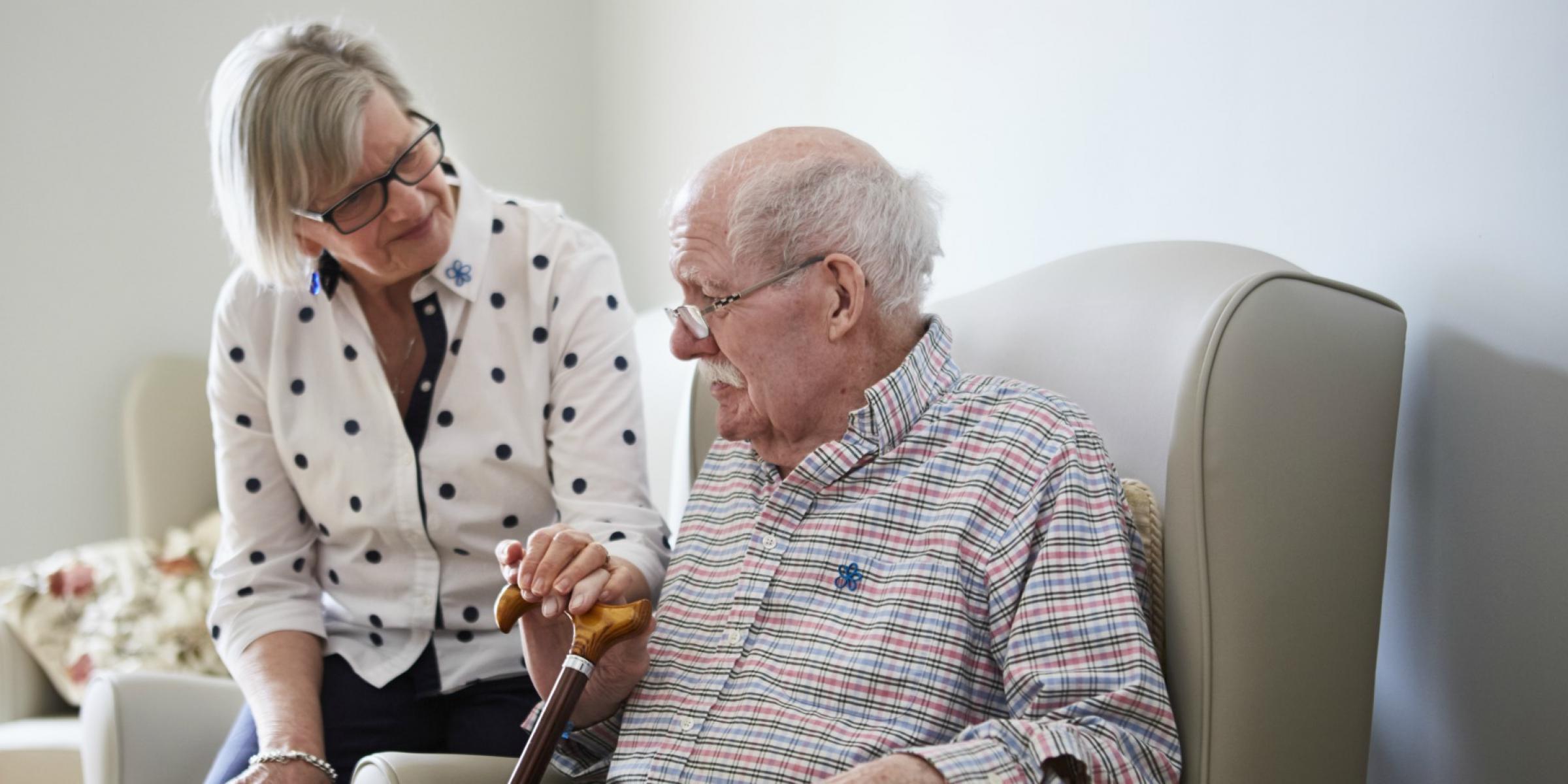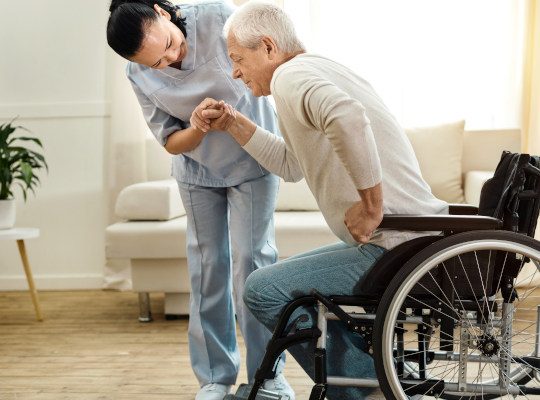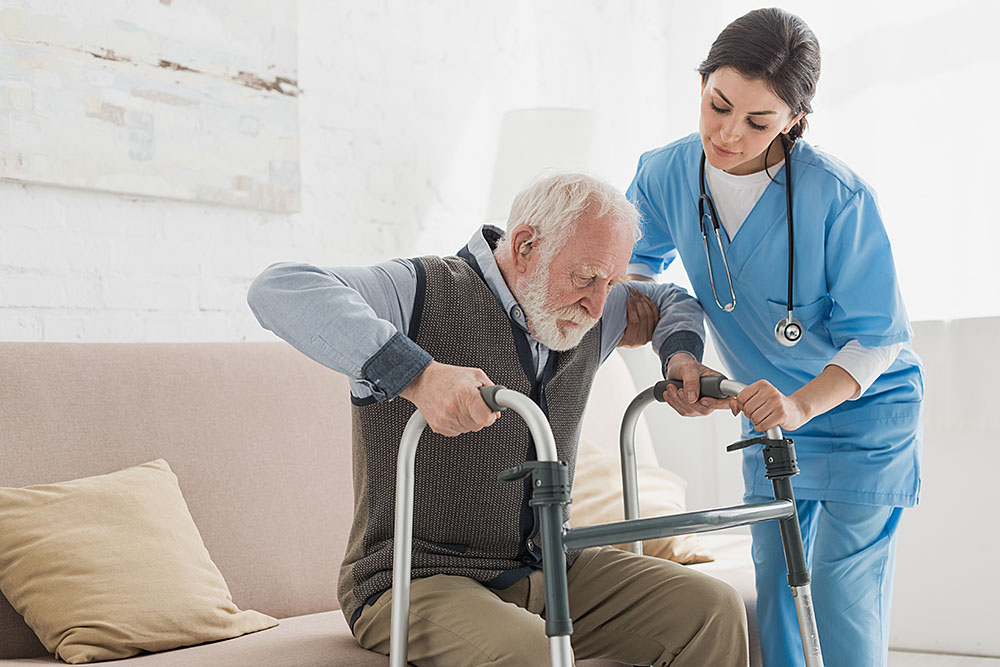When caring for an aging loved one, a few changes can be helpful. Some tricks you can do yourself at home will make tasks easier, reduce the risk of falling and improve accessibility. Most importantly, they will make life easier for everyone. And the best part? You can seamlessly and elegantly incorporate these ideas without turning your home into a hospital.
With these modifications and tricks that you can do yourself for almost no money, you’ll allow your elderly father, mother or grandparents to maintain their independence despite the mobility or vision challenges the years bring.
Tip 1: Defy the Darkness
One of the times of day when older adults start to get restless is when the sun goes down. Feelings of loneliness and insecurity can arise. Also, getting around the house is complicated when there are vision problems. A very inexpensive way for your loved one to locate light switches more easily is to make them visible at night.
Using fluorescent masking tape (sold at office supply stores), make a frame around the light switch and voila! Your loved one will be able to turn on the light without having to fumble with the wall.
Tip 2: Drink through a Straw
Many of these tips are for seniors with arthritis, osteoarthritis or hand mobility difficulties. Due to stiffness, pain or simply because of aging joints, the fine motor skills of the hands are gradually lost. Fine motor skills are what allow us to grasp and hold fine objects, such as a thread and a needle, a pencil or other everyday objects.
When the elderly person can only drink from their glass or cup with a straw, holding it with their hand can be difficult. For this tip, all you need is a clothespin, a small hollow plastic cylinder (like the part of a pen) and glue.
Place the clip on the edge of the glass as if you were going to hang it. With a little glue, stick the hollow piece of plastic, thread the straw through it and you already have a very easy way for your loved one to drink from the glass without the straw moving.
Tip 3: Flexible Ice Bars
You never know when you’ll need it, but it’s always good to have some ice ready to go in case of a blow or muscle pain.
Ice packs from the drugstore can be a solution if you always have ice cubes ready in the freezer, but they are large and difficult to handle.
We suggest making your own ice packs using 1 or 2 ziplock bags. Prepare a mixture of 2 parts water and 1 part disinfectant alcohol, fill the bag, remove as much air as possible before closing it tightly and placing it in the freezer.
Since the water and alcohol mixture has a lower freezing point than pure water, the bag will not freeze completely, but will remain somewhat soft. This will be useful when applying it to the affected muscle area, adapting the bag to your body shape. Also, you won’t get wet because the bag won’t break.
Tip 4: Chairs Adapted To the Elderly
Low chairs are the most uncomfortable pieces of furniture for seniors: you practically have to drop “down” to sit down and ask for help to get up. In addition to being uncomfortable, they are somewhat humiliating.
There’s no need to redecorate or part with your beloved sofas. Simply purchase rubber feet (the largest available) at the hardware store and place them on the chair legs.
TIP 5: Take Care of That Pesky Step
The most common household accidents among the elderly are falls, whether due to slips or steps inside and outside the home.
The most dangerous are those solitary steps that can go unnoticed because they are not very high or are the same color as the rest of the floor, especially if there is carpeting.
If you haven’t thought about leveling the floor yet or don’t want to spend on new flooring, it’s best to remove some of the carpeting around the step to make it visible. Or if it’s a wood or ceramic floor, painting a brightly colored stripe just before the step will be another very inexpensive trick to avoid tripping.
There you are! With those 5 tips you are sure to make your house safer and more easy to be around for your seniors. Want to learn more? Come back to check the second part of our article. Until then, do you have any other tips to share? Leave them in the comments below.






